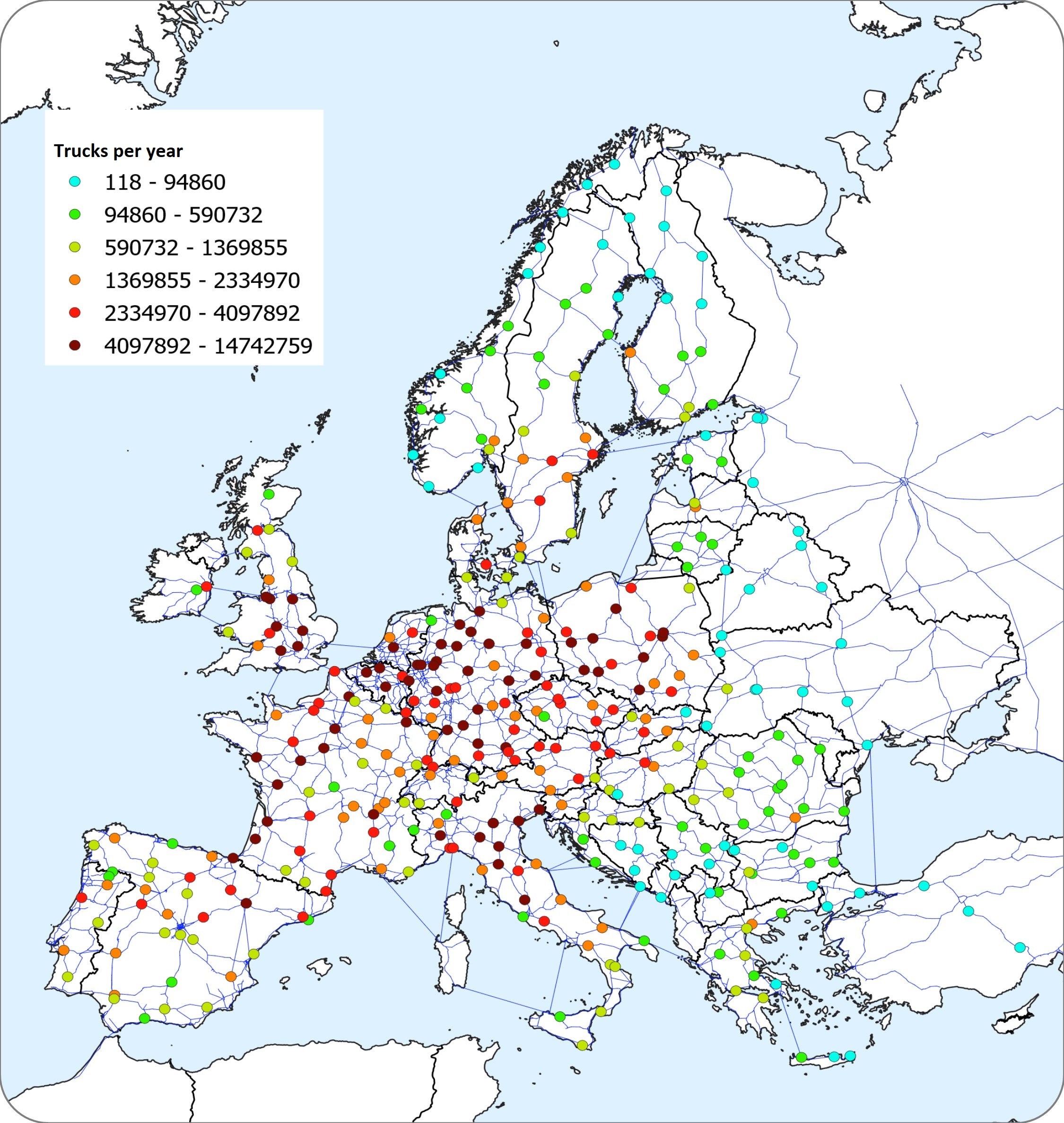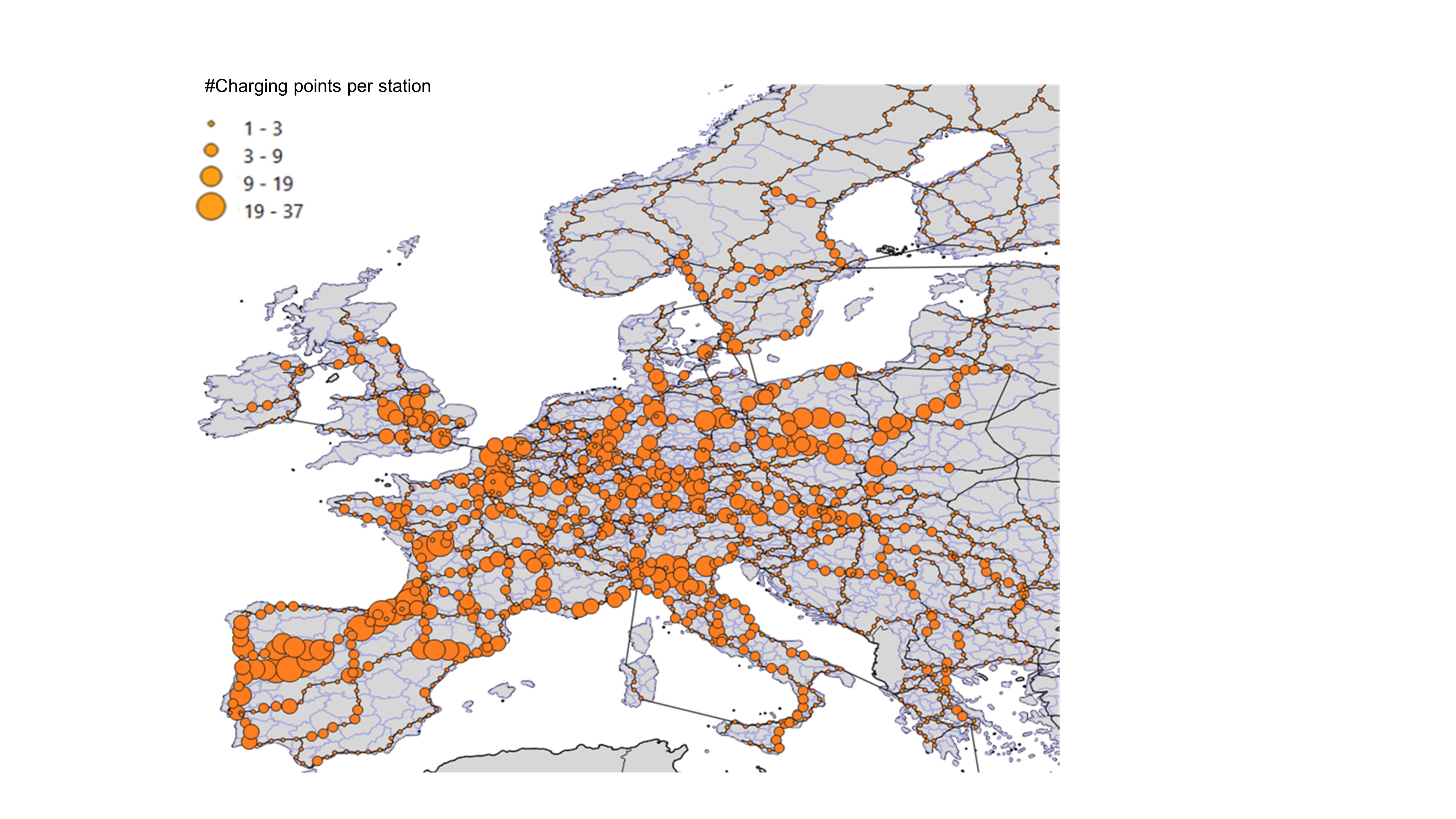A fast-charging infrastructure for electric trucks in Europe
Within Europe, heavy-duty vehicles are responsible for a quarter of greenhouse gas emissions in the transport sector and therefore play a central role in achieving the climate targets set by the EU. The limited range of electric trucks requires a European public fast-charging network to enable the widespread deployment of battery solutions. To investigate the existing electrification potential, we modelled the European road freight flows together with our colleagues Tim Signer and Patrick Plötz.
We used the European Transport policy Information System (ETISplus) dataset published in 2012. The dataset includes the volumes of goods transported between 1,676 regions in Europe. In order to be able to make a forecast of future demand for charging infrastructure in freight transport, we used the existing transport volume flows from the ETISplus dataset and updated them to the year 2030. Using a model of the European highway network, we mapped the transport volume flows to specific routes.


We used the resulting traffic flows as input data for two different approaches: the coverage approach and the Flow Refueling Location Model (FRLM). The two methods differ in their underlying objectives. The FRLM maximizes the utilization of individual charging points, placing charging infrastructure in locations with high charging demand. The coverage approach, on the other hand, aims to distribute charging locations as evenly as possible, guaranteeing high geographic coverage.
Within the FRLM, we identified 365 locations for fast charging infrastructure assuming an electric truck share of 100%. Most sites are located in France (42), Germany (40), Spain (30) and Italy (27). It can be observed that regions with a denser highway network also have a more closely meshed network of fast-charging stations and that these are mostly located at road intersections. For full electrification, 100 charging points would be installed at an average station, with at least 400 charging points required to maximize utilization at high-traffic stations.
Within the coverage approach, the stations are placed evenly distributed along the road. We assume a 100 kilometres distance in an initial network, which will be densified to a 50 kilometres distance network. This is in line with the targets demanded from the industry. According to a current report by ACEA, a starting network of charging stations every 100 kilometres by 2025 and an expansion network every 50 kilometres by 2030 will be necessary.
Our subsequent sizing results in 1,715 charging points at 812 locations, assuming an electric truck share of 5% and a charging time of 30 minutes in the starting network. In the expansion network with a targeted distance of 50 kilometres between locations and a share of 15% electric trucks, we forecast 4,067 charging points at 1,715 locations.
Both approaches offer initial proposals for what a Europe-wide fast charging network could look like in 2030. While the FRLM primarily provides a lower bound on the number of sites, the coverage approach shows how the sites must be sized if they are evenly distributed.
We present a detailed description of the methodology and the results of the coverage approach in our working paper “A charging infrastructure network for battery electric trucks in Europe“.